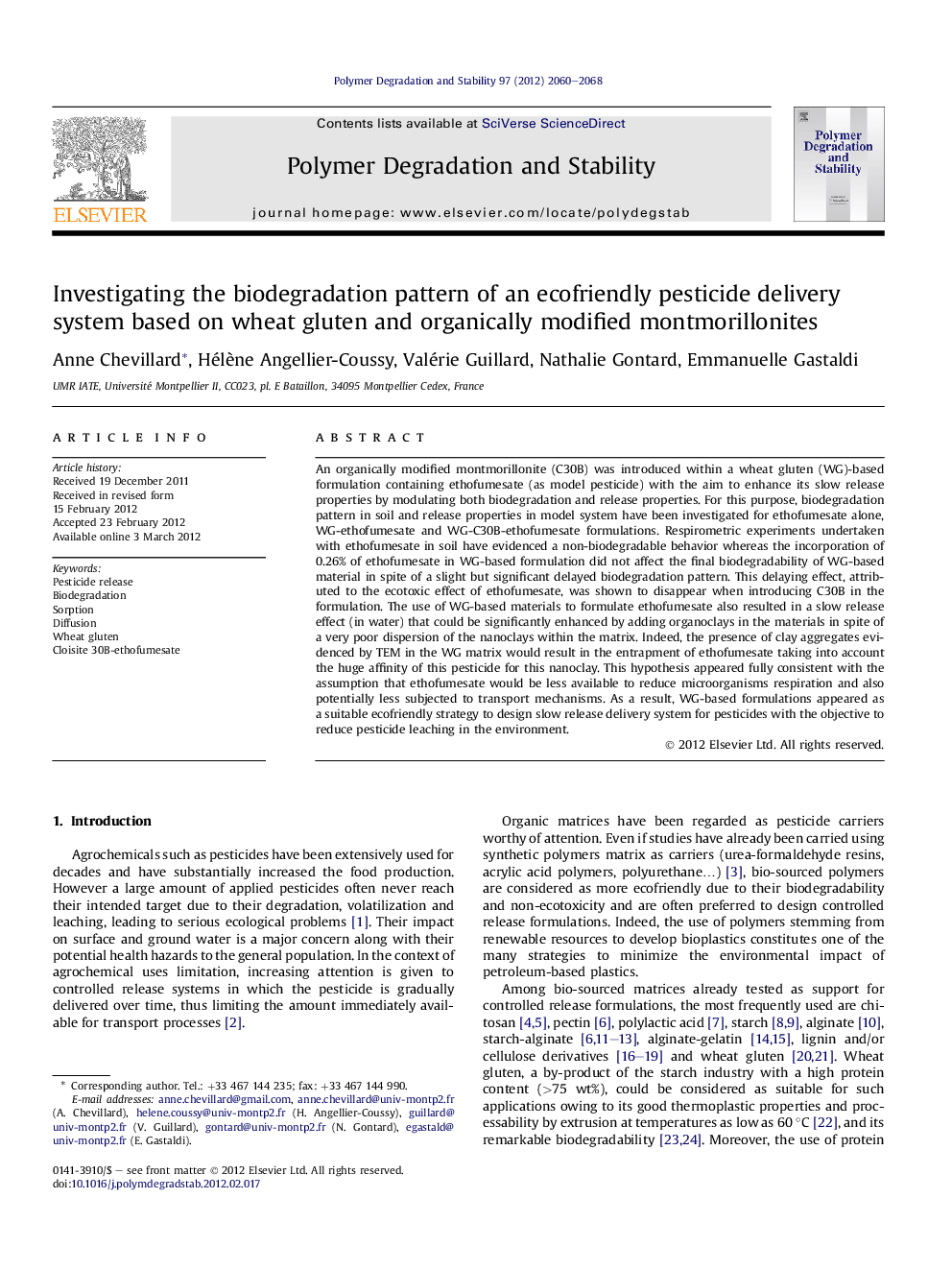| Article ID | Journal | Published Year | Pages | File Type |
|---|---|---|---|---|
| 5202328 | Polymer Degradation and Stability | 2012 | 9 Pages |
Abstract
An organically modified montmorillonite (C30B) was introduced within a wheat gluten (WG)-based formulation containing ethofumesate (as model pesticide) with the aim to enhance its slow release properties by modulating both biodegradation and release properties. For this purpose, biodegradation pattern in soil and release properties in model system have been investigated for ethofumesate alone, WG-ethofumesate and WG-C30B-ethofumesate formulations. Respirometric experiments undertaken with ethofumesate in soil have evidenced a non-biodegradable behavior whereas the incorporation of 0.26% of ethofumesate in WG-based formulation did not affect the final biodegradability of WG-based material in spite of a slight but significant delayed biodegradation pattern. This delaying effect, attributed to the ecotoxic effect of ethofumesate, was shown to disappear when introducing C30B in the formulation. The use of WG-based materials to formulate ethofumesate also resulted in a slow release effect (in water) that could be significantly enhanced by adding organoclays in the materials in spite of a very poor dispersion of the nanoclays within the matrix. Indeed, the presence of clay aggregates evidenced by TEM in the WG matrix would result in the entrapment of ethofumesate taking into account the huge affinity of this pesticide for this nanoclay. This hypothesis appeared fully consistent with the assumption that ethofumesate would be less available to reduce microorganisms respiration and also potentially less subjected to transport mechanisms. As a result, WG-based formulations appeared as a suitable ecofriendly strategy to design slow release delivery system for pesticides with the objective to reduce pesticide leaching in the environment.
Related Topics
Physical Sciences and Engineering
Chemistry
Organic Chemistry
Authors
Anne Chevillard, Hélène Angellier-Coussy, Valérie Guillard, Nathalie Gontard, Emmanuelle Gastaldi,
